Related Research Articles
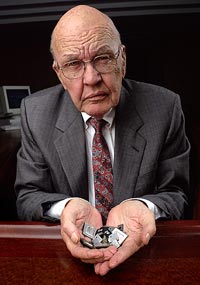
Jack St. Clair Kilby was an American electrical engineer who took part, along with Robert Noyce of Fairchild Semiconductor, in the realization of the first integrated circuit while working at Texas Instruments (TI) in 1958. He was awarded the Nobel Prize in Physics on 10 December 2000.
Lawrence R. Rabiner is an electrical engineer working in the fields of digital signal processing and speech processing; in particular in digital signal processing for automatic speech recognition. He has worked on systems for AT&T Corporation for speech recognition.
Ronald W. Schafer is an American electrical engineer notable for his contributions to digital signal processing.
James William Cooley was an American mathematician. Cooley received a B.A. degree in 1949 from Manhattan College, Bronx, NY, an M.A. degree in 1951 from Columbia University, New York, NY, and a Ph.D. degree in 1961 in applied mathematics from Columbia University. He was a programmer on John von Neumann's computer at the Institute for Advanced Study, Princeton, NJ, from 1953 to 1956, where he notably programmed the Blackman–Tukey transformation.
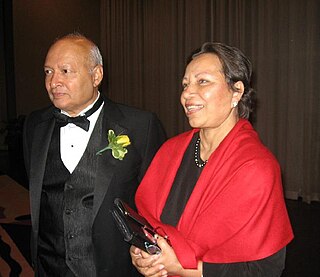
Thomas Kailath is an Indian born American electrical engineer, information theorist, control engineer, entrepreneur and the Hitachi America Professor of Engineering emeritus at Stanford University. Professor Kailath has authored several books, including the well-known book Linear Systems, which ranks as one of the most referenced books in the field of linear systems.
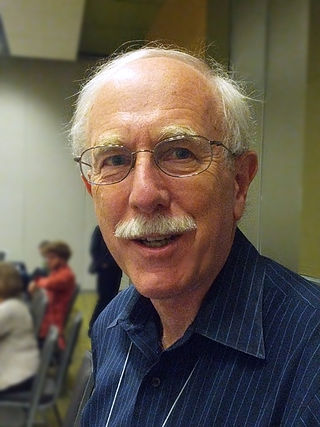
James H. McClellan is the Byers Professor of Signal Processing at the Georgia Institute of Technology. He is widely known for his creation of the McClellan transform and for his co-authorship of the Parks–McClellan filter design algorithm.

Thomas Shi-Tao Huang was a Chinese-born American computer scientist, electrical engineer, and writer. He was a researcher and professor emeritus at the University of Illinois at Urbana-Champaign (UIUC). Huang was one of the leading figures in computer vision, pattern recognition and human computer interaction.
Alan Victor Oppenheim is a professor of engineering at MIT's Department of Electrical Engineering and Computer Science. He is also a principal investigator in MIT's Research Laboratory of Electronics (RLE), at the Digital Signal Processing Group.
Arun N. Netravali is an Indian–American computer engineer credited with contributions in digital technology including HDTV. He conducted research in digital compression, signal processing and other fields. Netravali was the ninth President of Bell Laboratories and has served as Lucent's Chief Technology Officer and Chief Network Architect. He received his undergraduate degree from IIT Bombay, India, and an M.S. and a Ph.D. from Rice University in Houston, Texas, all in electrical engineering. Several global universities, including the Ecole Polytechnique Federale in Lausanne, Switzerland, have honored him with honorary doctorates.
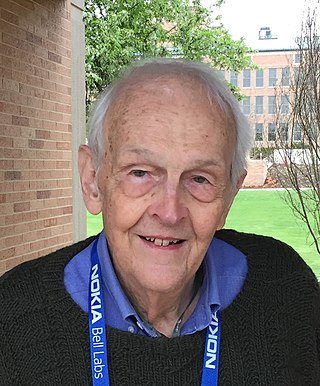
James Frederick Kaiser was an American electrical engineer noted for his contributions in signal processing. He was an IEEE Fellow and received many honors and awards, including the IEEE Centennial Medal, the IEEE W.R.G. Baker Award, the Bell Laboratories Distinguished Technical Staff Award, and the IEEE Jack S. Kilby Signal Processing Medal.
Fumitada Itakura is a Japanese scientist. He did pioneering work in statistical signal processing, and its application to speech analysis, synthesis and coding, including the development of the linear predictive coding (LPC) and line spectral pairs (LSP) methods.
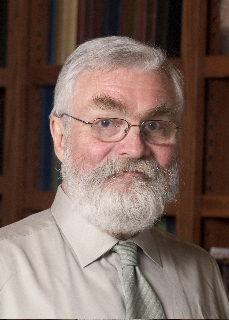
Robert M. Gray is an American information theorist, and the Alcatel-Lucent Professor of Electrical Engineering at Stanford University in Palo Alto, California. He is best known for his contributions to quantization and compression, particularly the development of vector quantization.
The IEEE Jack S. Kilby Signal Processing Medal is presented "for outstanding achievements in signal processing" theory, technology or commerce. The recipients of this award will receive a gold medal, together with a replica in bronze, a certificate and an honorarium.

John Mathew Cioffi is an American electrical engineer, educator and inventor who has made contributions in telecommunication system theory, specifically in coding theory and information theory. Best known as "the father of DSL," Cioffi's pioneering research was instrumental in making digital subscriber line (DSL) technology practical and has led to over 400 publications and more than 100 pending or issued patents, many of which are licensed.
Charles Sidney Burrus was an American electrical engineer and the Maxfield and Oshman Professor Emeritus of Electrical and Computer Engineering at Rice University in Houston, Texas. He is widely known for his contributions to digital signal processing, especially FFT algorithms, IIR filter design, and wavelets.
Robert W. Brodersen was a professor emeritus of electrical engineering, and a founder of the Berkeley Wireless Research Center (BWRC) at the University of California, Berkeley.
David Albert Hodges (1937–2022) was an American electrical engineer, digital telephony pioneer, and professor of electrical engineering at the University of California, Berkeley.
Hans Wilhelm Schüßler was a German telecommunications engineer, professor at the University of Erlangen-Nuremberg, an IEEE Fellow and a pioneer in communications systems and digital signal processing.
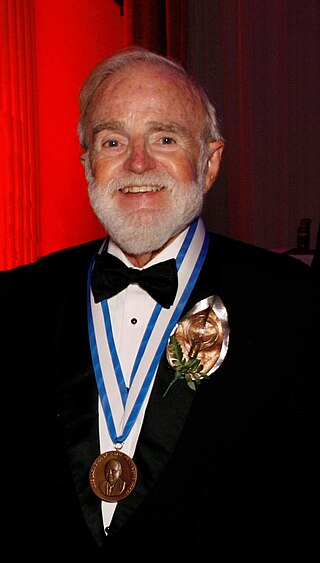
Harry Leslie Van Trees was an American scientist specializing in radar, sonar, communications and signal processing.
Palghat P. Vaidyanathan is the Kiyo and Eiko Tomiyasu Professor of Electrical Engineering at the California Institute of Technology, Pasadena, California, USA, where he teaches and leads research in the area of signal processing, especially digital signal processing (DSP), and its applications. He has authored four books, and authored or coauthored close to six hundred papers in various IEEE journals and conferences. Prof. Vaidyanathan received his B.Tech. and M.Tech. degrees from the Institute of Radiophysics and Electronics, Science College campus of University of Kolkata, and a Ph.D. degree in Electrical Engineering from University of California Santa Barbara in 1982.
References
- ↑ "Thomas Parks, an oral history conducted in 1998 by Frederik Nebeker, IEEE History Center, New Brunswick, NJ, USA". 26 January 2021.
- ↑ "Thomas W. Parks Cornell Faculty page".
- ↑ "Publications from Google Scholar" . Retrieved 27 February 2011.
- ↑ "IEEE Jack S. Kilby Signal Processing Medal Recipients" (PDF). IEEE. Archived from the original (PDF) on December 16, 2021. Retrieved February 27, 2011.
- ↑ "IEEE Jack S. Kilby Signal Processing Medal Recipients, 2004 – Thomas W. Parks and James H. McClellan". IEEE. Archived from the original on April 8, 2010. Retrieved February 27, 2011.
- ↑ "NAE Members Directory – Prof. Thomas W. Parks". United States National Academy of Engineering . Retrieved February 27, 2011.